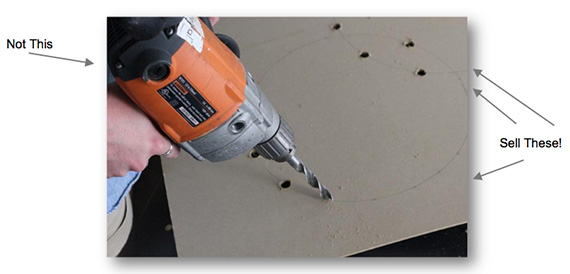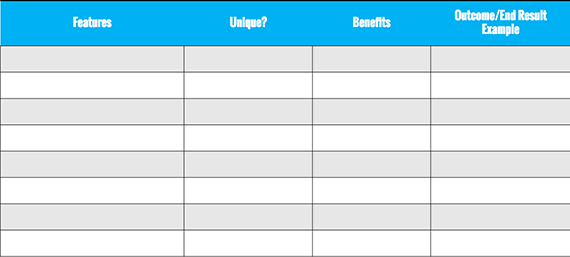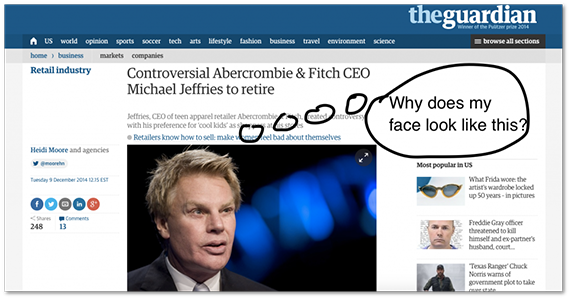Do you remember when the Microsoft Surface product line hit $1 billion in sales in 2015?
When product sales are in the billions, then you can probably declare it a victory.
But it wasn’t always that way…
In fact, the Surface was almost dead-on-arrival thanks to a misguided OS and a complete lack of direction.
Here’s why, and how you can avoid the same mistakes Microsoft made.
How Windows RT Failed
The first generation of Surface tablets ran on Windows RT, which was uniformly lambasted by critics for a variety of reasons including:
- High cost
- Low performing software
- Product line cannibalization
- Little-to-no market differentiation
- Being “too closed”
- Reluctant OEM partnerships
But the underlying reason?
No one knew what the hell it was. Or who it was for.
Obviously, this misalignment would also make it a little difficult to align product specs and technology.
Explains Neil McAllister:
For all its faults, Windows RT might still have stood a chance if Redmond had managed to communicate who its audience was meant to be. But it hasn’t. Three months after the Surface RT launch, it’s still hard to say who the target market for an RT device is.
Even Window’s own Julie Larson-Green admitted that they didn’t do enough to explain the differences between RT and Windows 8.
“Differences”, would have been a good start. But “differences”, wouldn’t have been enough.
Here’s why.
Beware of “Talking Past Your Customers”
When launching a new product or marketing campaign, companies will list features, compare themselves to competitors, and talk about how socially responsible or sustainable they are.
The problem is, nobody cares about these things.
Around the time of the release, McKinsey published a study where they surveyed 700 global executives across six sectors to examine why they buy.
And their primary finding was that companies are talking past their customers by (a) falling victim the curse of knowledge, and (b) emphasizing things that customers don’t care about.
This same problem applies to consumer-facing companies and products too.
Most consumers could care less about which operating system Microsoft (or any other similar company) is running on their tablets. As long as it’s good.
As long as it’s fast and easy to use and enjoyable.
Contrast and compare that with another competitor (*ahem*, rhymes with chapel) that doesn’t sell it’s OS, but instead shows how customers can share the emotion and joy of a new birth with family members by using their product.
Now that’s powerful. And it sells.
And it’s a perfect example of getting your messaging to resonate with your customers.
3 Easy Tips to Galvanize Your Market
The right messaging in today’s online environment is essential because it’s everything from site content and blog posts, to whitepapers, eBooks, advertisements, email campaigns, and yes, even social media posts.
So figuring out your messaging should be Step #1, before proceeding to all those other things.
Here are 3 tips you can use today to improve the way you’re communicating to customers (or dare I say, message + market fit).
Tip #1. Sell the Hole, Not the Drill
Most customers care about the outcome or end result they get from using your product. Not necessarily the product itself (sad emoticon).
In other words, sell the hole, not the drill.
(Most) people don’t buy a drill because of how nice it is. They buy it because they need to make holes in the wall to hang their new 65” TV.
One of my favorite (literal) examples of this is Lowe’s Creative Ideas, which shows customers how to do everything from small DIY projects to major room renovations.
They tackle the problem and solve for end result first, and then introduce their products second as the natural way to move from Point A to Point B.
Tip #2. Kill the Hype
Hype doesn’t work for most businesses. And most consumers are smart enough today to see through it.
So cut the over-selling, and go for clarity in messaging.
(That includes copy and messaging dictated by a room full of MBA’s or HiPPOs.)
Building on the first tip, the easiest way to do this is by focusing on examples of outcomes and end results.
You can get there, by explaining your features as benefits. Then translate intangible benefits into concrete outcomes from a customer’s point of view.
Tip #3. Pick an Enemy
Choosing a specific customer segment and getting their attention, in theory, sounds easy. But in practice, it’s actually extremely difficult.
One of the best ways to (a) identify who you’re targeting and (b) get those people to buy-in, is by talking about who or what you’re against.
In other words, be polarizing!
Many years ago Abercrombie & Fitch’s CEO came under fire for making insensitive comments about who they want as customers:
“In every school there are the cool and popular kids, and then there are the not-so-cool kids. Candidly, we go after the cool kids. We go after the attractive all-American kid with a great attitude and a lot of friends. A lot of people don’t belong [in our clothes], and they can’t belong. Are we exclusionary? Absolutely.”
Incredibly crass and rude? Yes.
But here’s the thing…
He’s right.
You Can’t Stand Out and Fit In at the Same Time
The middle is dangerous.
“Red oceans” are crowded and hot and flat (wait… I think I’m mixing my business school metaphors).
Because everything (and everyone) in the middle is invisible.
If you want customers to notice you and get behind your mission, then you need to be able to stick your neck out a little.
Every company or brand you admire, from Tesla to Apple to The Daily Show with Jon Stewart (we miss you Jon!), is crystal clear on (a) exactly who they’re targeting and (b) how to clearly communicate with them.
A large part of that is by altering your messaging to align with your customer’s point of view.
Relying on the same generic, cliched, feature-based approach that everyone else uses is easy.
But it’s also the fastest way to being ignored in your own crowded marketplace.
About the Author: Brad Smith is the founder of Codeless, a B2B content creation company. A frequent contributor to Kissmetrics, Unbounce, WordStream, AdEspresso, Search Engine Journal, Autopilot, and more.



Comments (7)